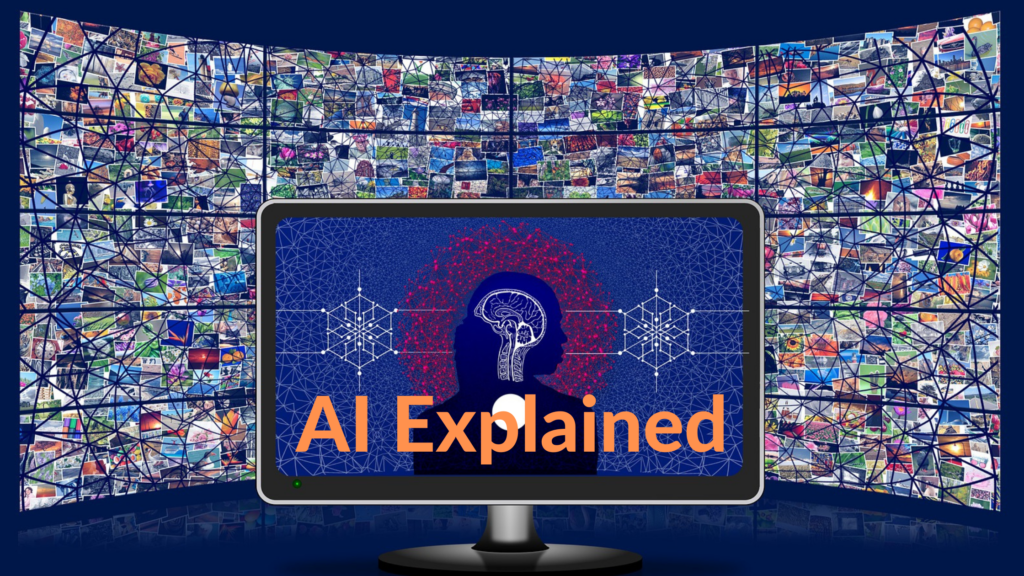Guest Article: AI Explained – what is AI?’
Guest article by Dr. Robert Ross
Dr. Robert Ross is a Senior Lecturer in the School of Computer Science in Technological University Dublin and an investigator with the SFI funded Adapt Research Centre. Robert’s research focuses on situated conversational interfaces and the boundary between language and vision.

AI, or Artificial Intelligence, has been described as the ability of a system to perform a task that would require intelligence if performed by a person. While this is useful as a starting point, it is often much more useful to define AI in terms of its impact on our daily lives.
AI has, believe it or not, been a real part of daily routines for 30 years now. This fact often surprises many, but washing machines and other domestic appliances with ‘Fuzzy Logic’ intelligence emerged from Japan in the 1980s, and the mass embrace of the internet from the mid-1990s lead to an information explosion that required AI to tame the masses of data.
As a result, the most prominent examples of AI in our daily lives are probably internet search and product recommendations. Indeed, the best of 1990s AI search research led to the now ubiquitous web search experiences of Google and Bing. While the suggestions delivered to you by Netflix, YouTube, Amazon, and even your social media feeds, come from Recommender Systems AI research that was prominent in the early 2000s.
Other every-day applications of data-driven AI are the speech recogniser running on your mobile phone, or the grammar-hints provided in Microsoft Word. All these tools were once bleeding-edge AI research domains, but their mainstream acceptance has, by definition, normalised them.
The last 3 years have however seen advances in self driving AI and generative AI that make us again question what AI is, and ask what its impact will be on society, education, and the future of work.
While self-driving cars have captured much media attention, it is the proliferation and sophistication of generative AI that is most relevant to educators. These generative AI tools create new content ranging from high-definition graphics through to detailed essays with only a few words of a prompt.
The generative AIs that create text outputs and with which you can now have a relatively intelligent conversation are based on Large Language Models (LLMs). In simple terms these LLMs are an AI tool that have been trained on vast amounts of text to predict responses to requests and questions one word at a time. The two most prominent examples of these are ChatGPT and its sibling Microsoft Bing AI.
Much has been said lately in the media about LLM based conversational AIs. Reactions can broadly be split into three groups. First, we have the praise, relative amazement, and embracing of the technology for its potential. Second, we have the commentary on the errors, fallibility, and limits of the technology. And third, we have the loudest voices which typically question the impacts of LLM technology on education and the future of work.
LLM based conversational Ais are not magic, sentient, or even a surprise to those working in the space. They have been a long time coming, but the relative accuracy and flexibility of ChatGPT and models like it have propelled LLM conversational AI into the mainstream faster than expected. And in that sense, these technologies are truly disruptive technologies in the sense that we cannot yet understand the range of impacts that the technology will bring.
Yet, in education we can make some pronouncements. First, tools like ChatGPT will require educators to examine their assessment strategy to make sure that students that wish to take the easy way out do not misuse the tools. Engagement with learners and a focus on the process of creation and learning can be put to our advantage here, but we should also bear in mind that LLMs can hallucinate, or, in plan speak, get things wrong.
Second, LLM based conversational Ais look like being the biggest positive in the democratisation of education that has been seen since the dawn of the internet. AI enabled conversational tutors can supplement the classroom experience in ways that were previously only available to those with large families or big wallets.
Third, LLMs are causing some to question what it means to educate in a world where the literal answers to so many questions are available from a synthetic source. Should we be changing what we teach? Should we be changing how we teach? For secondary and tertiary education, the answer to these questions is likely yes, but to what degree and in what ways is yet to be understood.
LLMs conversational AI, and other forms of generative AI, will change the world of work, and again, we don’t fully understand how yet. However, by embracing AI technology in education while also doing due diligence with respect to its misuse, we can prepare our students for the future.
In short, AI is not coming, it is already here, and is a valuable part of all our lives. Let’s embrace it in education but be aware of its limitations.
Guest article by Dr. Robert Ross
ADAPT Workshops
ADAPT’s new AI in My Life workshop series aims to empower students as scientific citizens who can understand, evaluate and have a voice on the role of emerging STEM innovations (such as AI) in our lives. Information on the Transition Year programme is available at https://www.adaptcentre.ie/projects/ai-in-my-life/





